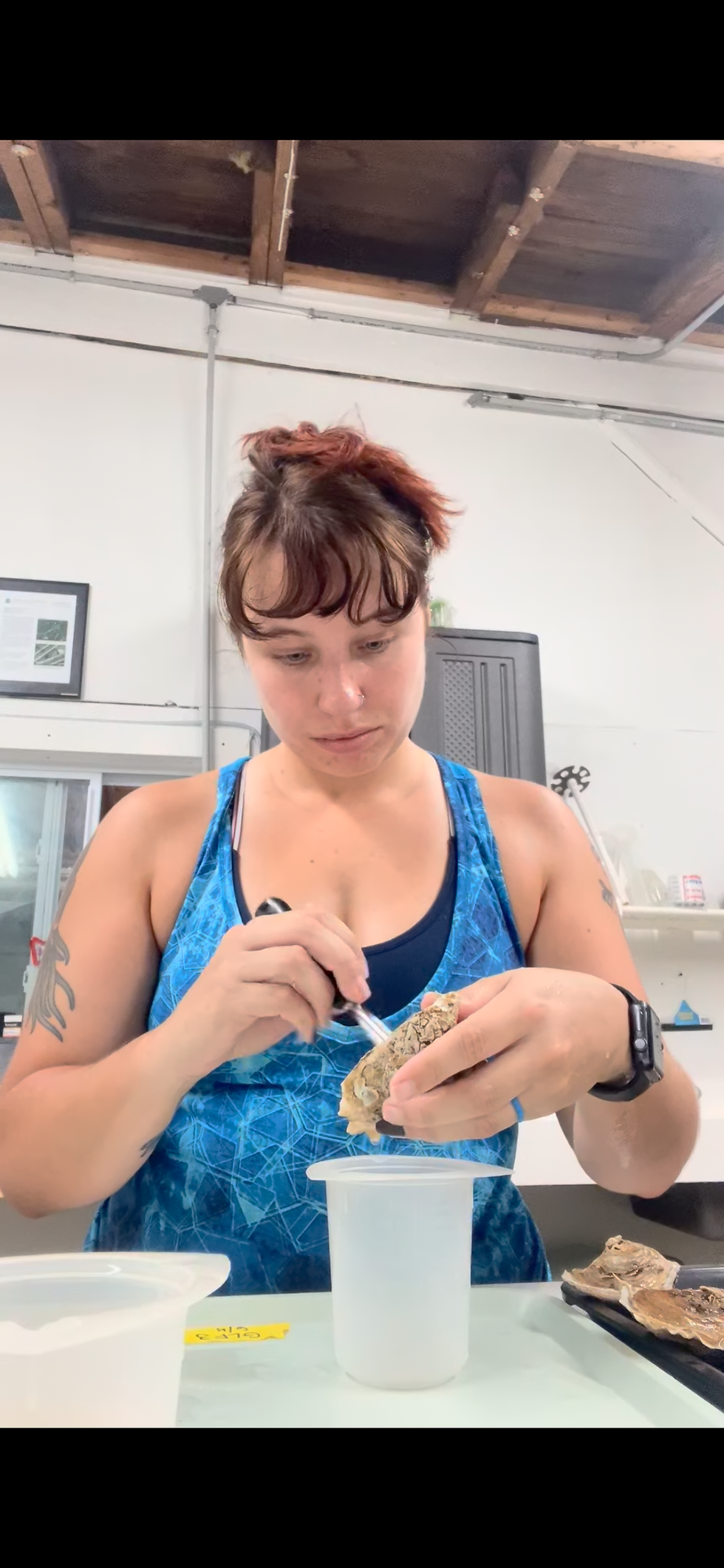Water Chemistry in RAS
- Emily Allen
- Jun 30, 2023
- 2 min read
Rivest Lab at VIMS
Abbey Sisti
2023
Objectives: 1. Identify whether water quality is playing a role in growth rates and oyster mortality in RAS systems.
Taking a Closer Look at Water Chemistry in RAS
While RAS is an exciting tool with a lot of potential to benefit the hatchery during periods of poor water conditions, it still needs to be refined before it’s ready for widespread use. Larvae housed in the RAS system occasionally have slower growth or higher mortality than other larvae from the hatchery. For RAS to be successful, it needs to produce larvae in the same abundance and of the same quality as those grown using traditional hatchery techniques. The OSH R&D team has been working hard to identify why some larvae grown in the RAS struggle. Take a look at some of our RAS ongoing RAS work here.

Collecting Samples for Water Quality in our Ras System
OSH hypothesized that the problem could lie in its water chemistry. Oysters build their hard shells out of a compound called calcium carbonate. As larvae, oysters are sensitive to the amount of calcium carbonate is in the water. Larvae have limited energy available to put towards shell growth, tissue growth, and development. Too little calcium carbonate can make it energetically costly for larvae to build their shells. In response to low calcium carbonate availability, oyster larvae may grow smaller shells or put their energy into shell growth instead of tissue growth. To find out whether water chemistry is indeed a problem in the RAS, Abbey Sisti was invited to assist the R&D team this Spring. Abbey is a PhD Candidate at the Virginia Institute of Marine Science (VIMS). Her research focuses on the impacts of ocean warming and acidification on Eastern oysters and American lobsters. Abbey is interested in a career working alongside members of the aquaculture and fisheries communities, so she sought out funding from the NSF program “INTERN” to participate in this project. In March, Abbey began to collect water samples from both the RAS and traditional hatchery tanks. Those samples are being processed in the Global Change Biology lab at VIMS, where data on pH, Total Alkalinity, and other variables will be used to determine if differences in water chemistry can explain why larvae from the RAS aren’t always successful.
In addition to collecting water samples, Abbey is being trained to run the RAS by Sam Glover, OSH’s R&D Manager. Together, they are developing a manual on how to run the RAS so it can be expanded and improved in the future. Abbey’s work is currently being funded by the Rivest lab at VIMS, and she is eagerly awaiting news of potential funding from NSF’s Intern program. This work is expected to continue into the summer, with final results to come in August of 2023. Check back in for more updates soon!



